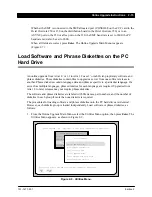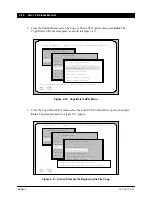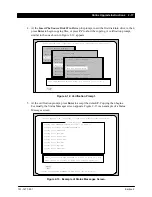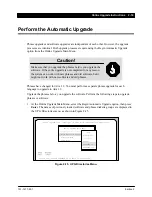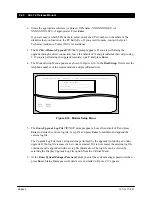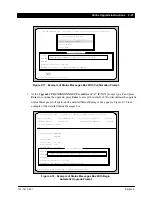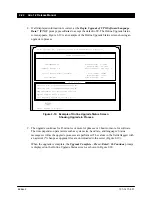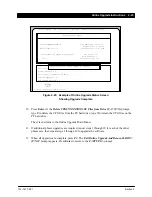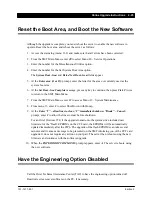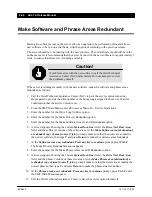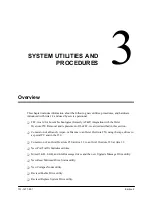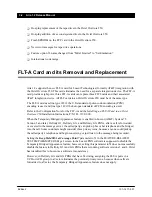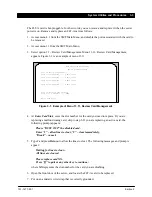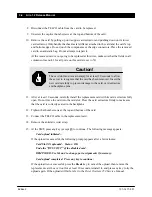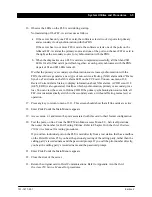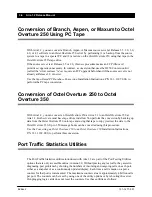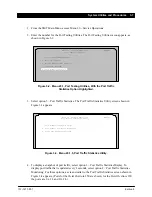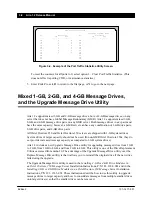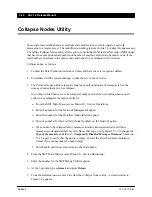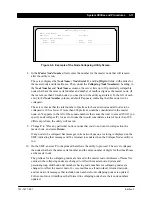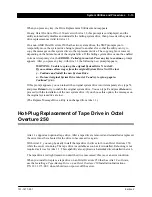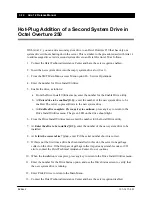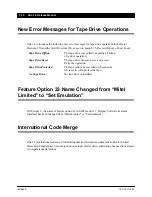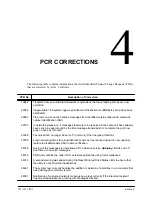
3-2 Aria 1.2 Release Manual
101–1477–001
Edition 2
-
Hot-plug replacement of the tape drive in the Octel Overture 250.
-
Hot-plug addition of a second system-drive in the Octel Overture 250.
-
Flash EPROMs on the CCF card in the Octel Overture 250.
-
New error messages for tape drive operations.
-
Feature option 33 name changed from “Mitel Limited” to “Set Emulation.”
-
International code merge.
FLT-A Card and its Removal and Replacement
Aria 1.2 supports the new FLT-A card for Lucent Technologies (formerly AT&T) integration with
the Octel Overture 250. This card eliminates the need for a separate integration device. The FLT-A
card provides eight ports; three FLT-A cards can replace three FLT8 cards and their associated
AT&T integration device. All FLT cards in an Octel Overture 250 must be of the same type.
The FLT-A card uses line type 145 if the U.S. standard of pulse-code-modulation (PCM)
encoding is used, and line type 149 if the European standard of PCM encoding is used.
Refer to the Configuration Note for the FLT-A and the Installing an FLT-A Card in an Octel
Overture 250 Installation Instructions, P/N 181–1190–000.
When the Temporary Bridged Appearance feature is enabled in Lucent (AT&T) System 75
Version 3 and later, Definity G1, Definity G3i, and Definity G3r PBXs, after a call is forwarded
or covered to the message server, the called party can pick up his or her telephone and be bridged
into the call. Some customers might consider this a privacy issue, because anyone could pick up
the called party’s telephone and begin conversing or just listen to the message being recorded.
Setting the Keep Held SBA at Coverage Point? parameter to N in the FEATURE-RELATED
SYSTEM PARAMETERS Page 1 screen in the Lucent PBX software is supposed to disable the
Temporary Bridged Appearance feature; however, setting this parameter to N does not successfully
disable the feature in Definity G3i and G3r PBXs that are running software versions 3 and 4. Octel
has identified this to Lucent as a software inconsistency.
However, in Definity G3i and G3r PBXs that have Vectoring, assigning the FLT-A ports in a
UCD or ACD group to a Vector eliminates the potential privacy issue, because when calls are
forwarded to a Vector, the Temporary Bridged Appearance feature does not apply.


